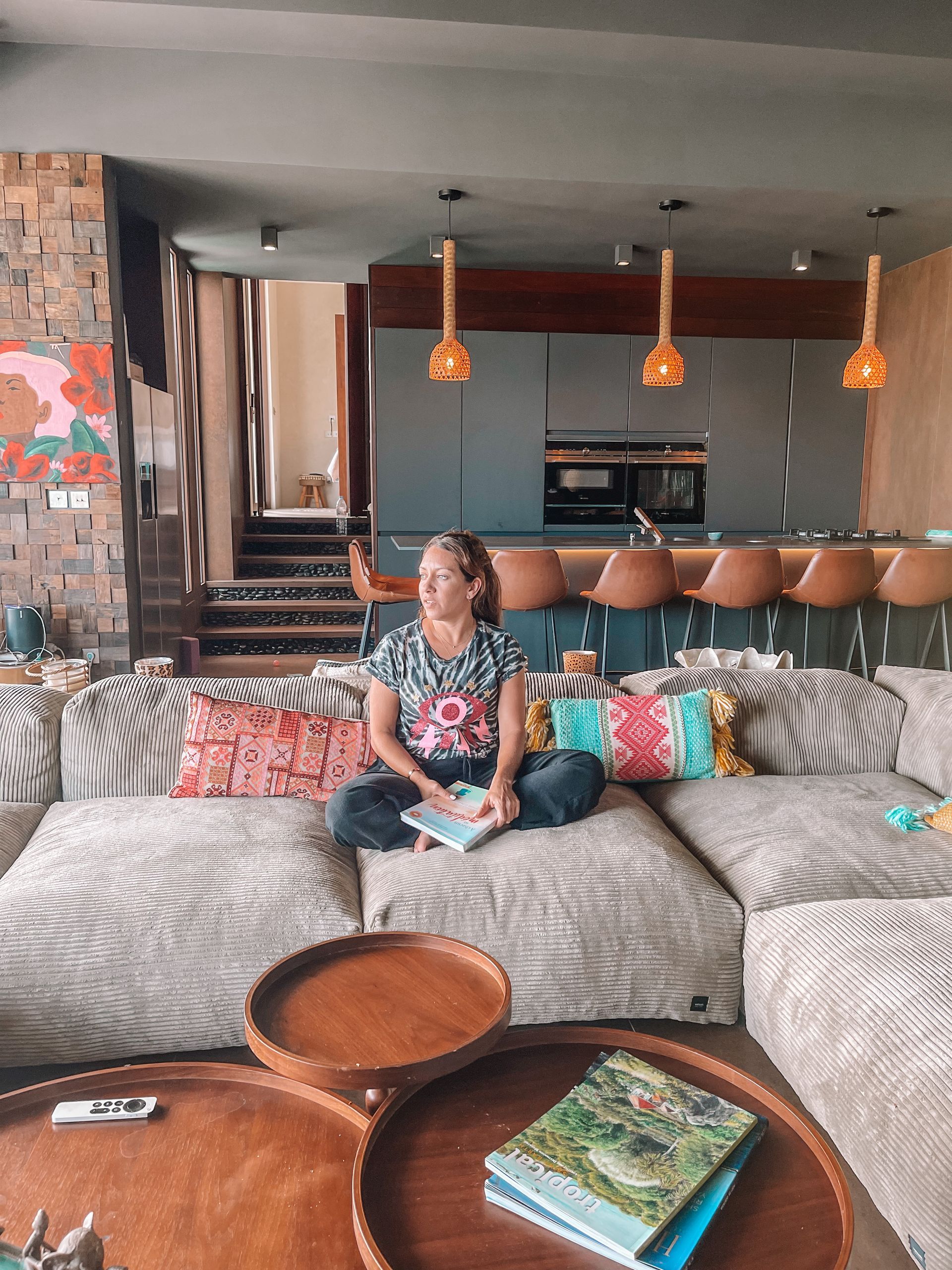🌿🧠 Yoga: Serenity and Mental Balance 🌺🙏
🌿🧠 Yoga: Serenity and Mental Balance 🌺🙏
Hello friends! Today, we're going to explore the wonders of yoga and how this ancient practice can transform our mental health. Whether you're an experienced yogi or a curious beginner, yoga has something to offer everyone. So, roll out your mat, take a deep breath, and let's embark on this journey towards serenity and inner balance together!
Yoga, an ancient practice originating from India, is much more than just physical exercise. It represents a complete discipline that encompasses meditation, controlled breathing, and physical postures. In this article, we'll explore how yoga can transform your life by improving your mental and emotional health, helping to manage stress, enhancing the quality of your sleep, and contributing to your overall well-being.
Stress Management: Release Daily Tensions 🤯
Stress is ubiquitous in our modern lives, but yoga can be your ally in combating it. Through a unique combination of gentle movements, mindful breathing, and meditation, yoga helps reduce cortisol levels, the stress hormone. Studies show that yoga can reduce symptoms of depression by increasing serotonin levels, a neurotransmitter crucial for mood regulation.
Why it works:
- Mindful Breathing (Pranayama): Deep breathing exercises increase oxygen supply to the brain, promoting a state of calm and clarity.
- Postures (Asanas): Yoga stimulates the production of dopamine and endorphins, the happiness hormones. Yoga postures, or asanas, help release accumulated tension in the body, contributing to a better mood and a general sense of well-being.
- Meditation: It helps calm the mind by focusing attention on the present moment, reducing ruminations and anxious thoughts.
⭐️ Practical Tip: Try a restorative yoga session before bed to soothe your mind and prepare your body for a restful night's sleep. Postures like "Supta Baddha Konasana" (reclining bound angle pose) are particularly effective.
Reducing Anxiety: Find Inner Peace ☮️
Anxiety can be paralyzing, but yoga offers powerful tools to alleviate it. By focusing on breathing and practicing postures that promote relaxation, yoga helps calm the mind. Research has shown that yoga can be as effective, if not more effective, than some traditional therapies in reducing anxiety symptoms.
Why it works:
- Deep Breathing: Focusing on each inhale and exhale helps ground the mind and reduce feelings of panic.
- Soothing Postures: Poses such as "Balasana" (child's pose) and "Shavasana" (corpse pose) induce a state of deep relaxation.
- Guided Meditation: Using guided meditations during yoga sessions can help direct the mind towards positive and calming thoughts.
⭐️ Practical Tip: Integrate postures like "Balasana" and "Shavasana" for an immediate calming effect. Practice them in a quiet environment with soft music for maximum relaxation.
Mood Enhancement: Feel Happy and Fulfilled 🤗
Yoga stimulates the release of endorphins, the "happiness hormones," which can help improve mood and reduce feelings of depression. Additionally, practicing specific postures can help release physical tension often associated with depression.
Why it works:
- Endorphins: Movements and stretches increase blood circulation and release endorphins, thus improving mood.
- Balance and Coordination: Poses like "Vrksasana" (tree pose) or "Garudasana" (eagle pose) require concentration and balance, diverting the mind from negative thoughts.
- Mind-Body Connection: Yoga encourages a deep connection between the body and mind, helping to identify and release negative emotions stored in the body.
⭐️ Practical Tip: Start your day with a series of sun salutations to energize your body and mind. This will set you in a good mood for the entire day.
Strengthening Mental Resilience: Become Stronger and Calmer 😇
Yoga teaches stress management and emotional regulation tools that strengthen mental resilience. This allows practitioners to face life's challenges with more calm and clarity. You learn to breathe through difficult moments, finding stability even when everything seems uncertain.
Increasing Self-Awareness and Mindfulness:
Yoga encourages introspection and mindfulness, helping practitioners become more aware of their thoughts and emotions without judgment. This heightened awareness can lead to better emotion management and greater resilience in the face of life's challenges.
Why it works:
- Breathing Practices: Techniques like "Nadi Shodhana" (alternate nostril breathing) balance the nervous system and reduce anxiety.
- Mindfulness: Practicing mindfulness during yoga helps stay present and respond rather than react to stressful situations.
- Discipline and Commitment: Regular yoga practice develops discipline and commitment, thus enhancing self-confidence and resilience.
👉🏼Improvement of Immune Function:
Reducing stress through yoga can strengthen the immune system, making the body more resistant to illnesses. Regular practice helps balance the hormonal system and reduce inflammation.
👉🏼 Promotion of a Healthy Lifestyle:
Yoga encourages healthy lifestyle habits, such as balanced nutrition and reducing risky behaviors. Yoga practitioners are often more aware of the importance of taking care of their body and mind.
👉🏼 Reduction of Chronic Pain:
Yoga is often recommended for managing chronic pain, such as back pain, due to its beneficial effects on posture and muscle relaxation. Asanas can help realign the body and reduce muscle tension.
⭐️ Practical Tip: Practice breathing techniques like "Nadi Shodhana" (alternate nostril breathing) to balance your nervous system and strengthen your mental resilience. Add guided meditations to reinforce this practice.
With regular practice, yoga helps develop better resilience to stressful situations. Practitioners learn to respond more calmly and steadily to daily challenges, balancing their nervous system.
Improving Sleep Quality: Peaceful and Restful Nights 😴
By promoting relaxation and reducing stress, yoga can improve sleep quality and help alleviate sleep disorders such as insomnia. Imagine slipping into a deep, restful sleep after a gentle yoga session, with your mind calm and your body relaxed.
Why it works:
- Muscle Relaxation: Stretches and postures release muscle tension that can interfere with sleep.
- Regulation of the Nervous System: Breathing and meditation techniques help regulate the nervous system, facilitating falling asleep and sleep quality.
- Relaxation Routine: A yoga session before bed creates a relaxation routine that prepares the body and mind for sleep.
⭐️ Practical Tip: Incorporate a short evening yoga session with postures like "Viparita Karani" (legs up the wall) to prepare your body for a restful night's sleep. Combine it with slow, deep breathing exercises to maximize the relaxing effects.
Practitioner Testimonials: Voices of Experience
Practitioner testimonials often highlight a sense of inner calm, mental clarity, and overall well-being after a yoga session. Here are some inspiring testimonials:
👉🏼 Marie, 35 years old:
"Since incorporating yoga into my daily routine, I feel much less stressed. I've learned to breathe through difficult moments and stay calm. My sleep has also improved; I wake up rested and full of energy."
👉🏼 Lucas, 28 years old:
"Yoga has helped me overcome my anxiety attacks. Breathing techniques and soothing postures have taught me to calm my mind. After each session, I feel lighter and more serene."
👉🏼 Clara, 42 years old:
"Yoga has changed my life. I suffered from depression and chronic stress, and yoga has helped me regain balance. I am more resilient and can handle life's challenges with more calm and clarity."
Conclusion: Namaste and Well-Being 🧘🏻♀️
In conclusion, yoga is not just physical exercise; it is a holistic practice that offers profound benefits for mental and emotional health.
So, why not integrate yoga into your daily routine? Whether it's to reduce stress, improve your mood, or simply find some inner peace, yoga has something to offer everyone.
Namaste, and enjoy every breath and movement on your mat. 🪷






